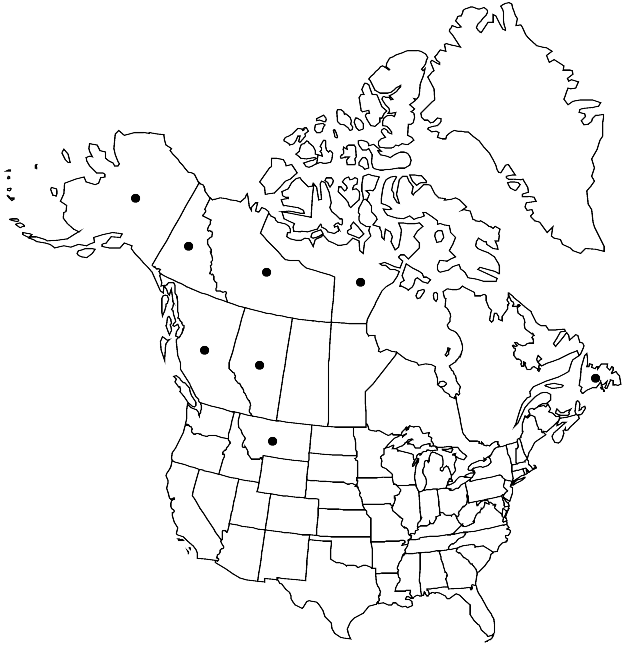Hypnum procerrimum
Flora 49: 458. 1866.
Plants large, rusty brown to golden brown or occasionally dark green, dull. Stems 2–8 cm, yellowish to brownish, suberect to procumbent, densely branched, regularly pinnate, branches 0.1–1.5 cm; hyalodermis absent, central strand present; pseudoparaphyllia foliose. Stem leaves falcate-secund, ovate-oblong, gradually narrowing to apex, 1–1.5 × 0.5–0.8 mm; base often auriculate; margins plane, entire to sinuate; acumen tapering; costa double and slender or ecostate; alar cells many, subquadrate to hexagonal, region well defined in auriculate portion, not excavate, 7–8 cells high along margin, 6–8 cells wide; basal laminal cells slender, yellowish or brownish, walls porose; medial cells 60 × 8 µm. Sexual condition dioicous. Sporophytes unknown.
Habitat: Terrestrial, calcareous open terrain, rock, cliff ledges and bases, tundra, open spruce forests, edges of sandy beaches
Elevation: low to moderate elevations (0-1500 m)
Distribution

Alta., B.C., Nfld. and Labr. (Nfld.), N.W.T., Nunavut, Yukon, Alaska, Mont., Europe.
Discussion
Hypnum procerrimum has an interrupted distribution in Arctic and alpine areas of the Northern Hemisphere, usually in well-drained sites. Plants of H. procerrimum have blunt, weakly toothed pseudoparaphyllia and triangular alar regions; the medial laminal cells are linear-flexuose with somewhat pitted walls. The species is very distinctive; some small forms might be confused with Ctenidium molluscum, but the toothed leaves and the laminal cells often with projecting distal ends distinguish the latter.
Selected References
None.